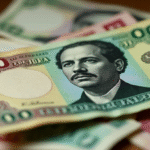Investors Taking Time to Assess Policy Changes Impact
According to Axel Christensen, Director of Investment Strategy for Latin America at BlackRock, investors are taking time to understand the implications of recent policy changes in Mexico’s economic landscape. This explains part of the stagnation observed in investments, reflected in the lack of economic growth for several months.
Policy Changes and Investor Confidence
Christensen explained in an interview with El Economista following BlackRock Investment Institute’s “Mid-Year Outlook” release that structural and systemic changes, such as the judicial reform, are not foreign to emerging economies.
“Markets usually anticipate such changes, especially if they were previously announced or expected. Perhaps this is well captured in the recent economic activity figures, which have been quite low, partly due to reduced investment reflecting factors like the ongoing change,” he commented from New York.
Foreign Direct Investment (FDI) Trends in Mexico
Data from the Bank of Mexico shows that Foreign Direct Investment (FDI) arriving in Mexico via trimester flows peaked at 1.6% of GDP in Q1 2022, dropping to 1.4% of GDP the following year.
By Q3 of the previous year, just after Morena’s presidential and congressional victory, FDI flow significantly decreased to represent 0.2% of GDP.
Reversal of Investment Decline
In the last quarter of the previous year, it was confirmed that Mexico’s Congress would advance in judicial reform initiatives, a decision made by Mexico’s government.
By then, private investment continued to decline, representing 0.1% of GDP.
Christensen stated that once investors adjust to the new framework, a surge in investment is expected. This scenario unfolded in Chile when constitutional modification intentions were announced but never materialized.
“Between 2022 and 2023, there was a halt in investments towards the mentioned country, followed by economic growth resumption,” he noted.
Bank of Mexico data indicates that, in Q1 of this year, FDI flow increased to represent 1.2% of GDP.
Mexico’s Attractiveness Amidst T-MEC
BlackRock’s expert dismissed nearshoring discussions, asserting that no country is better positioned than Mexico for attracting investments due to its geographical position and existing trade integration with the US and Canada.
“We’ve rapidly transitioned from a hyperglobalized world to a fragmented one, presenting both challenges and opportunities for the region and Mexico,” he commented.
He emphasized that investors will identify opportunities and assess risks, with Latin American markets, especially Mexico, standing out due to their higher integration with the US and redesign of production chains.
Industrial Transformations and Private Investment
Christensen highlighted that industrial transformations accelerate investment attraction processes. For Mexico’s economic potential to fully materialize, private capital is essential.
The Inter-American Development Bank (IDB) estimates that Latin America and the Caribbean require over $2.2 trillion in infrastructure investment by 2030, equivalent to 3.1% of the region’s annual GDP.
“These requirements cannot be met without private capital, as governments are limited by social programs and lack flexibility to divert resources for long-term investments. This applies to Mexico as well as the rest of Latin America,” he pointed out.
Consequently, he suggested that countries should open space for increased private investment participation, where BlackRock can contribute.
Key Questions and Answers
- Q: Why are investors hesitant in Mexico? A: Investors are taking time to understand the implications of recent policy changes in Mexico’s economic landscape.
- Q: How has Foreign Direct Investment (FDI) in Mexico been affected? A: FDI flow peaked at 1.6% of GDP in Q1 2022 and dropped to 0.2% by Q3 of the previous year following Morena’s victory.
- Q: What is BlackRock’s stance on Mexico’s investment climate? A: Despite recent challenges, BlackRock believes Mexico remains attractive for private investment due to its geographical position and existing trade integration with the US and Canada.
- Q: How can industrial transformations benefit Mexico’s economy? A: Industrial transformations accelerate investment attraction processes, and private capital is essential for Mexico’s economic potential to fully materialize.
- Q: What is the IDB’s infrastructure investment estimate for Latin America by 2030? A: The IDB estimates that Latin America and the Caribbean require over $2.2 trillion in infrastructure investment by 2030, equivalent to 3.1% of the region’s annual GDP.






